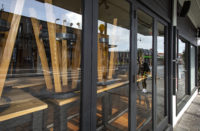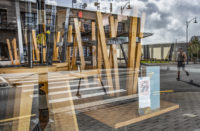
International tourists continue to contribute strongly to spending growth, making up over 10 per cent of the extra total spending through Paymark in the last four months and over 50 per cent of growth amongst accommodation merchants.
Spending nationally through Paymark was $5,014 million in February, up in underlying terms by 5.1 per cent since February 2017 and up 0.1 per cent in sea
The highest annual underlying growth rates were recorded by merchants in Marlborough (16 per cent), which includes Kaikoura in the Paymark statistics, and Southland (11.6 per cent).
Slow growth was experienced in Auckland/Northland (4.4 per cent) again, as well as in Nelson (+1.6 per cent) and Canterbury (+3.5 per cent).
Over the recent, busy four months, nationwide Paymark spending has totalled $20,921 million, up 5.4 per cent in underlying terms on November to February 12 months earlier.
Within this total, payments with foreign-issued credit cards have totaled $1,183m, constituting 5.7 per cent of all payments.
At the margin, the tourist impact is greater with the annual growth in international credit card spending being 11.3 per cent of the total spending growth.
This spending impact of international tourists continues to be greatest amongst accommodation merchants, where they make up 32.8 per cent of the sector payments through Paymark and 55.3 per cent of their annual payment growth.
Other merchants having strong links with international tourists include duty free and gift stores within “selected retail shops”, art galleries, museums and activity operators amongst “activities and events” and airlines and rental vehicle companies within “transport”.
Conversely there are many merchants where foreign-issued credit cards represent less than 2 per cent of all spending, such as hardware stores, tyre companies, financial service providers and utility companies.
Credit cards issued in Australia represent a large portion of foreign card spending, being 29 per cent of total foreign credit card spending in the recent four months.
Growth in spending from this source remains strong at 14 per cent per annum. Also strong was spending growth with Chinese-issued credit cards. Conversely UK spending through Paymark declined this summer.
The regional mix of international tourist spending over summer highlights several trends.
First, there is tourist spending returning to Marlborough, now that State Highway 1 is open again, and consequently a shift away from neighbouring Nelson.
Second, there has been strong tourist spending growth in regions such as Otago, West Coast and Southland where international tourism traditionally plays a relatively large role, a likely factor behind the general strong spending growth in this part of the country in recent months.
Third, there are also other regions where foreign spending plays a relatively lesser role than domestic spending that have experienced strong international spending this summer, including Waikato, Palmerston North and South Canterbury.
And last, strong international spending growth in Auckland/Northland confirms the reason for the slow total spending growth in this region of late is due to domestic factors, likely to be a slower housing market.



